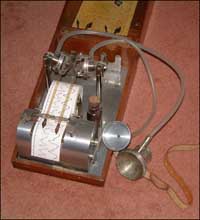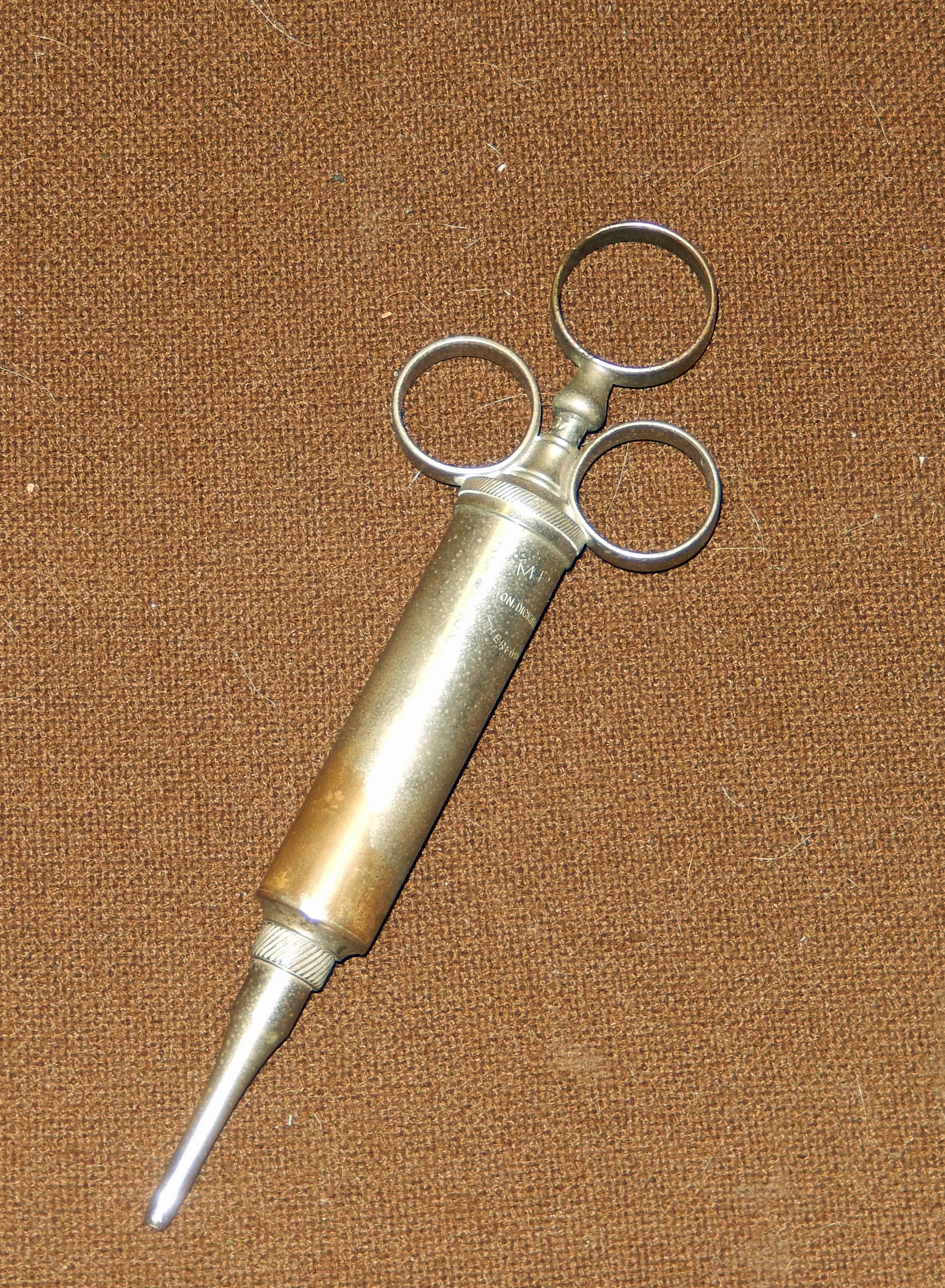What passes for psychoanalysis in America these days is a far cry from the psychoanalysis Freud devised in the early years of the last century. A sea change began in the 1970s, when Heinz Kohut, a Vienna-born and Chicago-based psychoanalyst, developed what he termed “psychoanalytic self psychology.” At the core of Kohut’s theorizing was the replacement of one kind of psychoanalytic method with another. Freud’s method – which Freud himself employed imperfectly at best – revolved around the coolly self-possessed analyst, who, with surgeon-like detachment, processed the patient’s free associations with “evenly hovering attention” and offered back pearls of interpretive wisdom. The analyst’s neutrality – his unwillingness to become a “real” person who related to the patient in conventionally sympathetic and supportive ways – rendered him a “blank screen” that elicited the same feelings of love and desire – and also of fear, envy, resentment, and hatred – as the mother and father of the patient’s early life. These feelings clustered into what Freud termed the positive and negative transferences.
Kohut, however, found this traditional psychoanalytic method fraught with peril for patients burdened less with Freudian-type neurotic conflicts than with psychological deficits of a preoedipal nature. These deficits gained expression in more primitive types of psychopathology, especially in what he famously termed “narcissistic personality disorder.” For these patients – and eventually, in Kohut’s mind, for all patients – the detached, emotionally unresponsive analyst simply compounded the feelings of rejection and lack of self-worth that brought the patient to treatment. He proffered in its place a kinder, gentler psychoanalytic method in which the analyst was content to listen to the patient for extended periods of time, to affirm and mirror back what the patient was saying and feeling, and over time to forge an empathic bond from which interpretations would arise.
Following Kohut, empathy has been widely construed as an aspect, or at least a precondition, of talking therapy. For self psychologists and others who draw on Kohut’s insights, the ability to sympathize with the patient has given way to a higher-order ability to feel what the patient is feeling, to “feel with” the patient from the inside out. And this process of empathic immersion, in turn, permits the therapist to “observe” the patient’s psychological interior and to comprehend the patient’s “complex mental states.” For Kohut, the core of psychoanalysis, indeed of depth-psychology in general, was employment of this “empathic mode of observation,” an evocative but semantically questionable turn of phrase, given the visual referent of “observe,” which comes from the Latin observare (to watch over, to guard). More counterintuitively still, he sought to cloak the empathic listening posture in scientific objectivism. His writings refer over and over to the “data” that analysts acquire through their deployment of “scientific” empathy, i.e., through their empathic listening instrument.
I was Heinz Kohut’s personal editor from 1978 until his death in the fall of 1981. Shortly after his death, I was given a dictated transcript from which I prepared his final book, How Does Analysis Cure?, for posthumous publication. Throughout the 80s and into the 90s, I served as editor to many senior self psychologists, helping them frame their arguments about empathy and psychoanalytic method and write their papers and books. I grasped then, as I do now, the heuristic value of a stress on therapeutic empathy as a counterpoise to traditional notions of analytic neutrality, which gained expression, especially in the decades following World War II, in popular stereotypes of the tranquilly “analytic” analyst whose caring instincts were no match for his or her devotion to Freud’s rigid method.
The comparative perspective tempers bemusement at what would otherwise be a colossal conceit: that psychoanalytic psychotherapists alone, by virtue of their training and work, acquire the ability to empathize with their patients. I have yet to read an article or book that persuaded me that empathy can be taught, or that the yield of therapeutic empathy is the apprehension of “complex psychological states” that are analogous to the “data” gathered and analyzed by bench scientists (Kohut’s own analogy).
I do believe that empathy can be cultivated, but only in those who are adequately empathic to begin with. In medical, psychiatric, and psychotherapy training, one can present students with instances of patients clinically misunderstood and then suggest how one might have understood them better, i.e., more empathically. Being exhorted by teachers to bracket one’s personal biases and predispositions in order to “hear” the patient with less adulterated ears is no doubt a good thing. But it assumes trainees can develop a psychological sensibility through force of injunction, which runs something like: “Stop listening through the filter of your personal biases and theoretical preconceptions! Listen to what the patient herself is saying in her voice! Utilize what you understand of yourself, viz., the hard-won fruits of your own psychotherapy (or training analysis), to put yourself in her place! Make trial identifications so that her story and her predicament resonate with aspects of your story and your predicament; this will help you feel your way into her inner world.”
At a less hortatory level, one can provide trainees with teachers and supervisors who are sensitive, receptive listeners themselves and thus “skilled” at what self psychologists like to refer to as “empathic attunement.” When students listen to such instructors and perhaps observe them working with patients, they may learn to appreciate the importance of empathic listening and then, in their own work, reflect more ongoingly on what their patients are saying and on how they are hearing them say it. They acquire the ability for “reflection-in-action,” which Donald Schön, in two underappreciated books of the 1980s, made central to the work of “reflective professionals” in a number of fields, psychotherapy among them.[1] To a certain extent, systematic reflection in the service of empathy may help therapists be more empathic in general.
But then the same may be said of any person who undergoes a transformative life experience (even, say, a successful therapy) in which he learns to understand differently – and less tendentiously – parents, siblings, spouses, children, friends, colleagues, and the like. Life-changing events — fighting in wars, losing loved ones, being victimized by natural disasters, living in third-world countries, providing aid to trauma victims – cause some people to recalibrate values and priorities and adopt new goals. Such decentering can mobilize an empathic sensibility, so that individuals return to their everyday worlds with less self-centered ways of perceiving and being with others.
There is nothing privileged about psychotherapy training in acquiring an empathic sensibility. I once asked a senior self psychologist what exactly differentiated psychoanalytic empathy from empathy in its everyday sense. He thought for a moment and replied that in psychoanalysis, one deploys “sustained” empathy. What, pray tell, does this mean, beyond denoting the fact that psychoanalysts, whether or not empathic, listen to patients for a living, and the units of such listening are typically 45-minute sessions. Maybe he simply meant that, in the nature of things, analysts must try to listen empathically for longer periods of time, and prolongation conduces to empathic competence.
Well, anything’s possible, I suppose. But the fact remains that some people are born empathizers and others not. Over the course of a 27-year career in psychoanalytic and psychiatric publishing, I worked with a great many analysts and therapists who struck me as unempathic, sometimes stunningly unempathic. And those who struck me as empathic were not aligned with any particular school of thought, certainly not one that, like self psychology, privileges empathy.
Nor is it self-evident that the empathy-promoting circumstances of psychotherapy are greater than the circumstances faced day-in and day-out by any number of physicians. Consider adult and pediatric oncologists, transplant surgeons, and internists and gerontologists who specialize in palliative care. These physicians deal with patients (and their parents and children) in extremis; surely their work should elicit “sustained empathy,” assuming they begin with an empathic endowment strong enough to cordon off the miasma of uncertainty, dread, and imminent loss that envelops them on daily rounds. Consider at the other end of the medical spectrum those remaining family doctors who, typically in rural settings, provide intergenerational, multispecialty care and continue to treat patients in their homes . The nature of their work makes it difficult for them not to observe and comprehend their patients’ complex biopsychosocial states; there are extraordinary empathizers among them.
When it comes to techniques for heightening empathy, physicians have certain advantages over psychotherapists, since their patients present with bodily symptoms and receive bodily (often procedural) interventions, both of which have a mimetic potential beyond “listening” one’s way into another’s inner world. There is more to say about the grounds of medical empathy, but let me close here with a concrete illustration of such empathy in the making.
William Stevenson Baer graduated from Johns Hopkins Medical College in 1898 and stayed on at Hopkins as an intern and then assistant resident in William Halsted’s dauntingly rigorous surgical training program. In June, 1900, at the suggestion of Baer’s immediate supervisor, Harvey Cushing, Halsted asked Baer to establish an orthopedic outpatient clinic at Hopkins the following fall. With no grounding in the specialty, Baer readied himself for his new task by spending the ensuing summer at the orthopedic services of Massachusetts General Hospital and the Boston Children’s Hospital. At both institutions, many children in the orthopedic ward had to wear plaster casts throughout the hot summer months. On arrival, Baer’s first order of business was to alter his life circumstances in order to promote empathy with, and win the trust of, these young patients. To wit, he had himself fitted for a body cast that he wore the entire summer. His sole object, according to his Hopkins colleague Samuel Crowe, was “to gain the children’s confidence by showing them that he too was enduring the same discomfort.”[2]
Psychotherapists are generally satisfied that empathy can be acquired in the manner of a thought experiment. “Bracket your biases and assumptions,” they admonish, “empty yourself of ‘content,’ and then, through a process of imaginative identification, you will be able to hear what your patient is saying and feel what she is feeling.” Baer’s example reminds us that illness and treatment are first and foremost bodily experiences, and that “feeling into another” – the literal meaning of the German Einfühlung, which we translate as “empathy” – does not begin and end with concordant memories amplified by psychological imagination.[3] In medicine, there is an irremediably visceral dimension to empathy, and we shall consider it further in the next posting.
[1] Donald A. Schön, The Reflective Practitioner: How Professionals Think in Action (NY: Basic Books, 1983); Donald A. Schön, Educating the Reflective Practitioner (San Francisco: Jossey-Bass, 1987).
[2] Samuel James Crowe, Halsted of Johns Hopkins: The Man and His Men (Springfield, IL: Thomas, 1957), pp. 130-31.
[3] The imaginative component of empathy, which is more relevant to its function in psychotherapy than in medicine, is especially stressed by Alfred Margulies, “Toward Empathy: The Uses of Wonder,” American Journal of Psychiatry, 141:1025-1033, 1984.
Copyright © 2012 by Paul E. Stepansky. All rights reserved.







